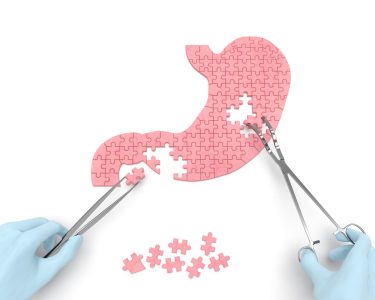
Roux-en-Y Gastric Bypass or often called gastric bypass is another bariatric procedure. The procedure has two components. First, the upper part of the stomach is divided from the rest of the stomach, creating a small stomach pouch with a volume of about 30 milliliters.
Then, the first part of the small intestine is divided and the lower end of the divided small intestine is brought up and connected to the newly created small gastric pouch. The procedure is completed by connecting the upper part of the divided small intestine to the lower small intestine so that the stomach acids and digestive enzymes from the bypassed stomach and the first part of the small intestine finally mix with the food.
The newly created stomach pouch is significantly smaller and causes you to eat significantly smaller meals, which means fewer calories are consumed. In addition, no more food passes through the small intestine, which would normally absorb calories and nutrients.
Health Benefits
- Significant weight loss in the long term (60% to 80% excess weight loss)
- Creates positive changes in intestinal hormones that reduce appetite and increase the feeling of satiety
- Resolution of type 2 diabetes in 83.8% of patients, usually within a few days after surgery
- Resolves high blood pressure in 75.4% of patients
- Cures high cholesterol problems in 95% of patients
Surgeon
General Surgeon
Anesthesia
General
Duration of Surgery
1 Hour
Hospital Accommodation
2 - 3 Nights
Recovery Time
Basic Recovery 10 Days
Transfer to Hospital and Airport
Price includes








